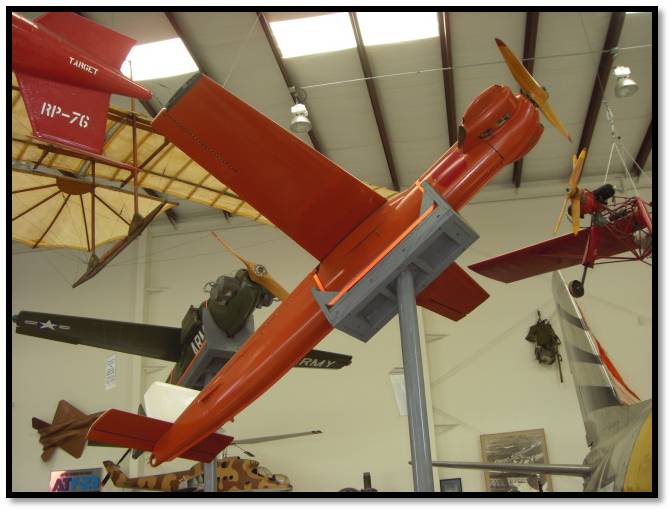
Northrop KD2R5 "Shelduck" Basic Training Target Drone
The Northrop KD2R5 "Shelduck" basic training drone
was used internationally by the armed forces of at least 18 countries.
The KD2R5 was used as a training device for ground-to-air gunnery
practice. It was also used as a training target for surface-to-air
missiles such as the Seacat, Tigercat, Redeye, Blowpipe, Sparrow,
Chaparral, Hawk, Sidewinder and Nike.
Radioplane built a series of improved targets,
though details are unclear, unsurprising given the obscurity
of the subject as well as the multiple and confusing designations
applied to each model.
The ultimate result of this evolution, the "MQM-36
(originally KD2R-5) Shelduck" gunnery target, is well-known,
and in fact remains in service. Design of the Shelduck began
in1946, with first flight in 1947. It is larger and more businesslike
than the RP-5A, and is powered by a two-stroke McCulloch O-100-2
piston engine with 90 horsepower. The Shelduck can carry radar
enhancement devices on its wingtips.
Northrop Radioplane MQM-36 "Shelduck"
/ KD2R-5:
Wingspan: 3.5 meters: 11 feet 6 inches
Length: 3.85 meters: 12 feet 8 inches
Height: 0.76 meters: 2 feet 6 inches
Empty weight: 123 kilograms : 271 pounds
Launch weight: 163 kilograms : 360 pounds
Maximum speed: 370 KPH : 230 MPH / 200 KT
Service ceiling : 7,000 meters : 23,000 feet
Endurance: 1 hour
Launch scheme: RATO booster or bungee catapult
Recovery scheme: Parachute
Guidance System: Radio control
Radioplane KD2R5 "Shelduck" Basic Training Target Drone
Mounted on Launch Stand
(WMoF Archive / Northrop photo)
Design of the drone was started in 1946 and the prototype flew
for the first time in 1947. Since then, more than 55,000 of this
type, including early KD2R versions were built.
NORTHROP UNMANNED
TARGET DRONE
Drones like this were designed to be aerial targets for fighter
aircraft and ground fired missiles.
They were powered by a small jet engine, had maximum a speed
of approximately 650 mph and could stay airborne for up to 2
hours.
They featured a parachute recovery and an autopilot with radio
control.
Home